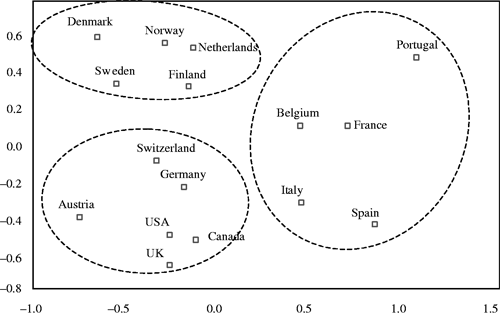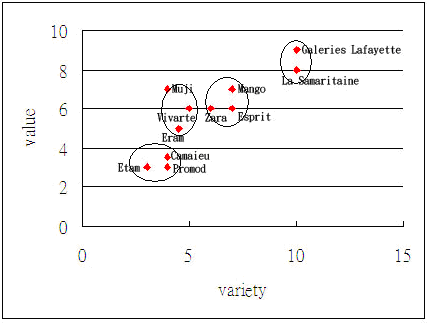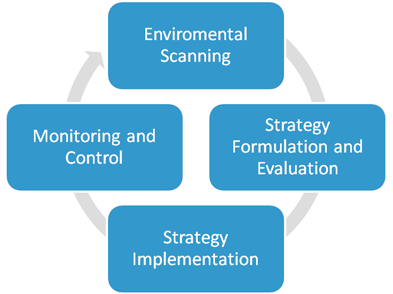Factors involved in fashion retailer Paraiso’s entry into France.
1. Executive Summary
Expansion into France is a viable option to Paraiso’s effort in internationalising their brand. The similarity in culture, proximity to Spain, its high volume of gross sales and high fashion sense make France the ideal location.
The five forces analysis concludes that the fashion retail industry in France is attractive yet competitive. Opening in Marseilles allows an easy distribution channel, while FDI norms allow for full control over internal processes.
An S.T.P analysis helps in identifying Paraiso’s competitors and its target market, while providing a framework for its positioning strategy. The 4 P’s analysis identifies the unique strengths of Paraiso and outlines the marketing mix. The generic strategy identifies that a focus differentiation strategy will create the highest competitive advantage. This in turn helps in identifying the KSFs. Both internal strengths and industry attractiveness allow the use of a DPM.
These analyses conclude that in order to create a competitive advantage, Paraiso must focus on its customer service and employee motivation in order to capture its targeted market segment. The DPM shows that Paraiso must be cautious after entering the French market. Implementing a strategic management process is essential for continuous competitive advantage, which is only obtainable by continually monitoring environmental trends to create and implement corresponding strategies.
2. Introduction
France is proposed in this report to be the internationalisation target of Paraiso. France shares culture similar to Spain. Its geographical proximity to Spain is another important factor for targeting France. Moreover, the private final consumption expenditure of France was relatively higher than other EU members such as Italy (189.8) and Spain (121.5) (OECD, 2008).
3. Brief/ Relevant PEST Analyses
3.1. Economic Analysis
France has the sixth largest economy in Europe. It has a GDP of $2.5 trillion. The French economic policy promotes investment and domestic growth. The focus is on creation of jobs and reducing the unemployment rate. Its fiscal policy is set by the European Central Bank in Frankfurt. In spite of privatisation, the government still controls a large share of the economic activity. It owns shares in corporations in sectors such as banking, telecommunications and transportation (Travel Document Systems, 2008).
In the third quarter of 2008, the French economy grew by 0.14% and it has so far avoided the economic crisis (ABC News, 2008).
3.2. Political Analysis
France is the second-largest trading nation in Western Europe. Import duty is not levied on any goods produced in any of the EU member states. Excise duty is levied on goods such as alcohol, tobacco and fuel. France follows the European Union’s common external tariff for imports. Manufactured goods have a tariff of 5-7%. The government is committed to free trade principles. There is a standard 18.6% VAT on most imports (HM Revenue & Customs, 2008).
3.3 Cultural Analysis
Paris is popularly known as the fashion capital of the world. The French are very inclined towards the latest fashion trends. Although the French fashion retail market is competitive, it can still be profitable, due to the people’s desire for fashion. As mentioned by Mooij, “innovativeness and interest in buying new products was strongly associated with interest in fashion and in being well dressed.” (Mooij, 2003, p124)
4. Industry Attractiveness & Barrier of Entry: Porters’ Five Forces
Bargaining Power of Suppliers:
- Entrepreneurial buying style allows for best value to be obtained
- There is no threat of forward integration by the supplier
- Supplier brand is powerful
- Switching costs are high
- Ensuring a close relationship with the supplier is critical.
- Conclusion: High barriers and weak forces acting on suppliers.
(Johnson & Scholes, 2002)
Bargaining Power of Buyers/Customers:
- There is a concentration of buyers
- There are a numerous operators within the supplying industry
- Alternative sources of supply exist
- Switching costs are low
- No threat of backward integration
Conclusion: Medium barriers and forces acting on buyers. (Johnson & Scholes, 2002)
Threat of New Entrants:
- Significant capital requirement
- Must have access to distribution channels
- Possible retaliation from current retailers
- 18.6% V.A.T on imports
- Tariffs comply with those of the EU
- Conclusion: Medium barriers and forces acting on new entrants.
(Johnson & Scholes, 2002)
Threat of Substitutes:
- Considered a luxury good thus prone to economic variables
- Offering both premium and private label brands lowers threat of substitutes
- Possibility of “doing without” is low when considering the targeted consumers
Conclusion: Medium forces and barriers acting on substitutes. (Johnson & Scholes, 2002)
Competitive rivalry:
- Medium barriers of entry
- Limited threat of substitutes
- Average to medium power exercised by both suppliers and buyers
- Market is growing, yet still faces intense competition
- Significant exit barriers
Through the Five Forces analysis (Johnson & Scholes, 2002), one can determine that the fashion retail industry in France is considered to be attractive yet highly competitive (Australian Trade Commission, 2008).
5. Market Entry Method
In order to build on its success in Spain, Paraiso will adopt a “Sprinkler” approach in order stay within the “Latin” high context culture cluster, as seen in the diagram below: (Waarts, 2006)

Source: (Waarts, 2006)
Although the differences within the cultures are significant, they still share a lot of cultural similarities compared to other European countries. Spain is geographically close to France and especially close to Marseille, which is on the coast. A freighter can be used to ship products to Marseille, which can then be trucked to the appointed to warehouses and stores. The funds utilised for direct investment will be used to rent a retail store in Saint Ferreol in Marseille for $259.59USPSF/Year (Colliers International, 2008). Having a port allows for exports of products from Paraiso to reach the store in Marseille with minimum lead time. Exports will only be used if better deals cannot be made with local suppliers. Direct investment will allow for high levels of control, which is crucial to employing the unique internal strength of Paraiso, despite the risk and cost. It takes seven days to incorporate a company costing around 317.07, covering all five procedures from checking for company name uniqueness to having company books stamped and initiated by the clerk of the commercial court (International Finance Corporation, 2008).
6. S.T.P Analysis
6.1. Segmentation
Behavioural segmentation
Behavioural segmentation will be adopted to explain the fashion consumer market within France. ‘Benefits sought’ and ‘perceptions’ of the French customers will be used to discuss the segmented French customer.
Benefits Sought
For a French customer, the priority order of benefits when buying clothes, shoes and cosmetics can be described as plenty of choice (Euromonitor, 2008), styling, familiarity, price and customer service.
Perceptions
The French seeshopping as a task to finish rather than a browsing-before-buying process (Michon and Chetbat, 2004). The brands available in the home market are well-known and familiar to them (Lea-Greenwood, 1997). Furthermore, family plays an essential role in French society (Corbett, 1994).
With this order of benefits and perceptions, the segmented French shoppers can be described in the following table:
| Benefits sought | Types of customers | Explanation of the segment | Related perceptions | Actual behaviour |
| Wide range of choice | *Variety seekers | High variety of goods leads to satisfaction. Willingness to pay higher prices. | Practicality of shopping/ Importance of family | Visiting trend-setter department stores. |
| Styling of the products | *Style seekers | Individualistic with a high fashion sense | Aesthetic and stylish. | Awareness of latest global trends. |
| Familiarity of the retailers | Loyal customers | Uncertain attitude towards unfamiliar settings of shopping. | Familiar with home market brands. | They go to ‘downtown’ (Godding, 2008) or ‘neighbouring stores’ (Corbett, 1994) |
| Price | Price-sensitive customers | They always look for the lost-cost products. | — | They wait for sale periods. |
| Quality of customer service | *Service encounter evaluators | They believe they are buying not only the product itself, but also the service provided to them. | — | They go to the shops where they can be served the best. |
Market Segmentation:
The Fashion retail market in France is considered clustered. Prominent fashion retailers, when analysed and plotted based on value (price, quality, and service) and variety (merchandise, brands, product range) resulting in the following chart:

6.2. Targeting
Paraiso will be targeting the following customer segments variety-seekers, style-seekers and service encounter evaluators in the above table. They are believed to belong to the middle to upper income classes. Paraiso will also target the market segment that offers the highest value and variety.
6.3. Positioning
With the understanding of the individualistic, trendy and aesthetic fashion mind of the French, Paraiso will position itself as a trend leader, offering a variety of brands, from Armani and Magli to its private labels, which will be designed by new designers who are greatly inspired by the Paris-runway events. The private labels will include young, casual wear, party wear and smart wear, as well as high quality, yet basic cosmetics. Apart from selecting some basic trend indicating items from super brands, customers can also buy themselves or the family many different private labeled clothing and accessories to mix and match.
Every season Paraiso will launch two collections, the customers will therefore find completely new fashion items eight times a year: Early-Spring, Spring, Summer, Mid-summer, Pre-fall, fall, Winter, Mid-winter Collections. The collections are for men, women and children. The company fully understands French children dress trendily too.
The focus of Paraiso is in line with most of the French persona. The company does not believe in ‘lowest price’ as it provides the best quality with a slightly higher than average price. Paraiso’s fashion sense is French while it has a sensibility of passion from Spain. Therefore the staff put the customers needs first and managers and other staff are united to help customers getting the most suitable combination of individual clothing style.
7. Marketing Mix: 4P’s/ C’s
Customer Solution:
Apart from selling branded and private-label apparel, footwear and cosmetics, Paraiso’s main competitive product is its service.
As Paraiso is a customer driven organisation, the sales assistants will be trained and updated with the latest fashion trends in order to assist the customers in their purchasing decisions. Moreover they will be allowed to make entrepreneurial decisions regarding customers and stock. Lastly, a generous returns policy will be adopted.
Customer Cost: Premium strategy will be adopted with high product quality and price offerings (Kotler, 2003). However, the prices of the private labeled products will be lower than the other available products for the “price sensitive consumers” (Jobber, 2007:20).
Convenience: The Paraiso retail outlet will be opened in the French city Marseille. The city is geographically close to Spain and is the administrative capital of France. The retail outlet will be located in the area Saint Ferreol where the rent price is € 249.59 per month (Colliers International, 2008).
Communication: A discount of 10% on purchases will be offered to loyal customers who apply for a store membership card. The Press is underdeveloped in France, therefore electronic media will be used for advertising.
8. Porter’s Generic Strategy
Since Paraiso offers high quality products, most of which are brand labels, either a price leadership or a differentiation strategy will not be advantageous. Thus, a focus (differentiation) strategy will be implemented to target middle to higher income segment groups while offering superior customer service. Implementing Paraiso’s “generous returns policy”, and “strong service culture” and offering high quality and trendy customer favoured products as a strategy could create a long term competitive advantage. (Paraiso article)
9. Key Success Factors
In order to determine the KSFs’, the first question is an analysis of demand, the second being an analysis of competition. In answering the former question, the targeted customers are those in the middle to high income bracket and are fashion attentive, thus they want the latest fashion from high quality brands. In order to survive competition, Paraiso must differentiate through its service and quality of customer care. Since the products are most likely identical to competitors, Paraiso offers a unique culture and environment in stores, concentrating more on customer satisfaction rather than profit. Its employees are motivated to create this environment, and are tasked in keeping a record of the customers purchases in fashion and their desires. Thus, dominant KSFs are to offer the latest trend, become highly reactive to changes in trends while providing a friendly atmosphere that seeks customer satisfaction (Hyde, 2008).
10. Directional Policy Matrix
Based on entering the French market, the DPM is used to identify necessary business policy based on the strengths of the company and the industry attractiveness.
Strength of the Company
| Industry Attractiveness | Strong | Average | Weak |
| High | Growth Concentration via. market penetration | Growth Concentration via. horizontal integration | Retrenchment Turnaround |
| Medium | Stability Pause, proceed with caution | Growth Stability | Retrenchment Captive company or divestment |
| Low | Growth Concentric diversification | Growth Conglomerate diversification | Retrenchment Bankruptcy or liquidity |
Through the DPM, Paraiso is within the stability category, in which it must continually analyse environmental factors. This could be achieved through constant market research, and by implementing the following strategic management process:

Source: (Hyde, 2008)
11. Conclusion
Through the comprehensive external analysis and the formulation of a marketing strategy, Paraiso will penetrate the French market through the use of focus differentiation based on service. Paraiso must capitalise on its customer service, employee motivation and ability to adapt quickly to trends in order to capture its targeted market segment of middle to upper class variety and quality seeking customers. The implementation of the strategic management process allows for monitoring and controlling of competitive strategy to ensure long-term success.
12. References
ABC News (2008). ‘France Stands Strong Against Financial Crisis’ [online].
ABC News http://www.abc.net.au/news/stories/2008/11/14/2420489.htm [Accessed 14 November 2008].
Auchan Group. (2008).
http://www.groupe-auchan.com/groupe_auchan/Projet_entreprise.html [Accessed 12 November 2008]
Australian Trade Commission. (2008). ‘Textile and Clothing to France’ [online].
Austrade. http://www.austrade.gov.au/Textiles-and-clothing-to-France/default.aspx [Accessed 14 November 2008].
Burton, R. (2007). Travel Geography. (2nd ed.). Essex: Pearson Education Ltd.
Colla, E. and Dupuis, M. (2002). ‘Research and Managerial issues on global retail competition:
Carrefour/Wal-mart’, International Journal of Retail and Distribution Management, 30(2), pp. 103-111.
Corbett, J. (1994). Through French Windows. Michigan: The university of Michigan Press.
Datamonitor. (2002) ‘The Age Effect on Consumer Behaviour” [online] Market Research.com
<http://www.marketresearch.com/product/display.asp?productid=814560&xs=r&SID=13603247-430859423-425850160&curr=USD&kw=&view=abs [Accessed 13 November 2008].
Doole, I and Lowe, R. (2008). International Marketing Strategy. London: Cengage Learning EMA.
Easey, M, (1995). ‘Segmentation and Marketing Mix’. In: Easey, M. and Atkinson, S. Fashion Marketing. Oxford: Blackwell Science. 95-106.
Euromonitor International. (2008). ‘Retailing in France’ [online]. Euromonitor.com
Euromonitor International http://www.euromonitor.com/Retailing_In_France [Accessed 10 November 2008]
Fashion TV (2008).
http://www.ftv.com/fashion/page.php?P=24 [Accessed in 13 November 2008]
Galeries Lafayette Department Store. (2008).
http://www.galeries-lafayette-paris.com/ [Accessed 12 November 2008]
Godding, M. (2008). ‘Vive La retail Revolution’ [online]. Shopping Centers Today
http://www.icsc.org/srch/sct/sct0208/feature6.php [Accessed 12 November 2008]
Hall, E.T. and Hall, M.R. (1990). Understanding Cultural Differences: Germans, French and Americans. Boston: Intercultural Press.
Harris Interactive (2008). ‘New Research Shows the Impact of the Internet on Consumer Behaviour in Europe’ [online] Market research world.
http://www.marketresearchworld.net/index.php?option=content&task=view&id=2056&Itemid [Accessed 13 November 2008].
Hyde, P. (2008). Marketing Concepts. Birmingham: University of Birmingham.
HM Revenue & Customs (2008).
http://www.hmrc.gov.uk/index.htm [Accessed 14 November 2008].
International Finance Corporation. (2008). ‘Starting a Business in France’ [online] Doing Business.
http://www.doingbusiness.org/exploretopics/startingbusiness/Details.aspx?economyid=70 [Accessed 5 November 2008].
Jobber, D. (2007). Principles and Practice of Marketing. (5th ed.). Maidenhead: Mc Graw-Hill Education
Johnson, G. and Scholes, K. (2002). Exploring Corporate Strategy. (6th ed.). London: Prentice-Hall.
Lea-Greenwood, G. (1997). ‘Marketing communications in the internationalization of UK fashion brands’, Journal of Fashion Marketing and Management, 1(4), pp. 357-358.
Kotler, P. (2003). Marketing Management. (11th ed.). New Jersey: Prentice-Hall.
Manvell, R. (2003). ‘Broadcast media in France- Radio, TV, Cable’ [online]. Discover France
http://www.discoverfrance.net/France/DF_media-bc.shtml [Accessed 13 November 2008].
Meredith, M. (2000). ‘Doing business internationally: an annotated bibliography’, Reference Service Reviews, 28(3), pp. 223-239.
Micho, R. and Chebat, J. (2004). ‘Cross-cultural Shopping mall values and habitats: A comparison between English- and French- speaking Canadians’, Journal of Business Research, 57, pp. 883-892.
Mooij, M. K. (2003). Consumer Behaviour and Culture. London: Sage
Muji France (2008). MUJI
http://www.muji.fr/ [Accessed 14 November 2008]
Organisation for Economic Co-operation and Development-OECD. (2008). Main Economic Indicators. France: OECD Publishing.
Schultz, D.E. (2000). Communication Globally: An Intergrated Marketing Approach. McGraw-Hill: USA.
‘Shopping in Paris Department Stores’
http://www.gisparis.com/paris_shopping/shopping_in_department_stores.htm [Accessed 14 November 2008]
Tebbel, J. (2003) ‘Print Media- Newspapers, Magazine’ [online]. Discover France.
http://www.discoverfrance.net/France/DF_media.shtml [Accessed in 13 November 2008].
Travel Document Systems Inc. (2008). ‘France Europe’ [online].
http://www.traveldocs.com/fr/economy.htm [Accessed 14 November 2008].
Waarts, E. and Everdingen, Y.M. (2006). ‘Fashion retailers rolling out across muli-cultural Europe’, International Journal of Retail and Distribution Management, 34(8), pp.645-657.
Web in France Magazine (2008). ‘In France, advertising, fashion and media companies sign accord to stop use of overly thin models’ [online]. Web in France Magazine http://www.webinfrance.com/france-advertising-fashion-media-companies-sign-accord-to-end-use-overly-thin-models-410.html [Accessed 13 November 2008]